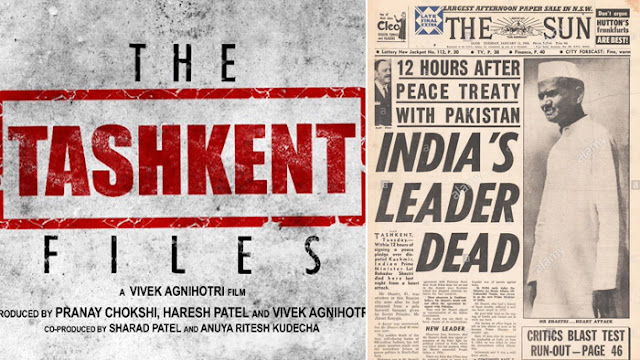Section 377, Homosexuality : How? Why? What is the punishment? Reforms.
Chapter XVI, section 377 of the Indian
penal code dating back to 1851, introduced during the British rule of India,
criminalizes sexual activities “against the order of nature” including
homosexual acts. But the nation is finally heading towards decriminalizing section
377 as SC starts hearing. A five judge constitution bench led by Chief Justice
of India ‘Dipak Misra’ is working on this and raising hopes among those who
challenged IPC section 377.
This blogpost covers four key points essential to the understanding of
homosexuality and section 377.
1. Introduction
to LGBT 2. Reasons behind one being a
homosexual?
3. Why is it a crime?
4. India heading towards
reforms
Here we go:
1. Introduction to LGBT
community: So basically, there are two main factors that play an important
role for every human being
1. Gender
identity 2. Sexual orientation
Talking about gender
identity, gender identity is how you wish to identify yourself, with which
gender irrespective of what sex you belong . Eg. If a person who is a male (sex), but feels like a female internally
i.e. relates to the characteristics and attributes associated with a female, as well as identifies as a female or
vice versa, that person is a ‘transgender’. This represents the ‘T’ of
the LGBT community.
Talking about sexual
orientation, your sexual orientation is your attraction towards people of a
particular sex.
In simple words, a male
attracted to male is ‘gay’. Female attracted to a female is ‘lesbian’
whereas a male attracted to both male and female OR a female attracted to both
male and female is a ‘bisexual’ A female attracted to a male or vice
versa is a ‘heterosexual’
2. Reasons behind one
being a homosexual:
Roughly speaking, 99% of people
we see around us are heterosexuals, then how do homosexuals happen to be?
Well, there are two main
reasons leading one, become a homosexual.
1. Conditional 2. Unconditional
Talking about conditional
circumstances, they refer to reasons like depression or loneliness that
results of one being a homosexual. But conditional homosexuality is for a short
period of time and temporary. Hence, conditional homosexuals fall under
bisexuals. But there are a plethora of cases and research that state a person
will permanently exist as a homosexual due to the influence of social and
environmental factors.
Talking about unconditional
homosexuals: there is no biological or genetic difference found in homosexuals and
heterosexuals after abundance of research. But, according to Ray Blanchard,
a professor of psychiatry at the ‘university of Toronto’ states:
As already known, there is Y
chromosome in males. Male fetuses have a male-specific protein called ‘H-Y
antigen’ carried by the Y chromosome. H-Y antigen is responsible for the sexual
orientation (specifically heterosexuality) of every human being. When a fetus
grows in the womb of mother, due to some activity if excessive pressure is experienced
by the baby (fetus), the H-Y antigen loses its functionality and the ‘be
straight’ signal will never flick the brain of the child. There’s no trace of
research that would 100% confirm any reason of one’s being a homosexual.
3. Section 377 and why is
homosexuality a crime?
Section 377 of the IPC
states, “whoever voluntarily has carnal intercourse
against the order of nature with any man, woman or animal shall be punished
with imprisonment for life, or with imprisonment of either description for a
term which may extend to ten years, and shall also be liable to fine.”
In 1533, British
government introduced the ‘buggery act’ which stated that sex against the
order of nature is a crime. (order of nature: peno-vaginal sex is natural) ( against
the order of nature: anal sex with man, woman or animal. And sexual activities
between member of same sex). This colonial era law was enacted by the British
government in India in 1861.
4. India heading towards
reforms:
In 1991, ‘AIDS
bhedbhav virodhi andolan’ started Publishing reports and articles on
discrimination happening against homosexuals (specifically gay). Early organizations
like ‘sakhi and ‘sangini’, also protested against discrimination
happening to lesbians with forums like LBT (lesbian, bisexual, transgender)
In 2001, NAZ FOUNDATION filed the first important petition
challenging the constitutionality of section 377 but the court dismissed the
case in 2004, saying that none had been punished under section 377 yet
and such people exist in minority. But after the petition gaining a lot of
support from LGBT activists and organizations, the case was again heard in 2009
and Delhi HC gave a landmark decision decriminalizing section 377 as it
contradicted and violated article 14 (law of equality), article 15
(prohibition of discrimination on grounds of religion, sex, race, caste or place
of birth) and article 21 (life and personal liberty)
But, the major U-turn
was in 2013, when ‘Suresh Kumar’ with 15 others filed a
petition against the decriminalization countering that article 14, 15 and 21
are valid when the case refers to a ‘group of people’ and homosexuals
contribute only 0.3% of Indian population. The ‘Review Petition’ filed
by ‘Naz Foundation’ was dismissed. Delhi high court recriminalized section
377.
Finally in 2017, when
Naz foundation filed a ‘Curative Petition’, T
S Thakur – 43rd chief justice of India, favored the petition
substantiating with ‘Right to Privacy’
being a fundamental right of an Indian citizen.
July 10, 2018: SC begins
hearing on section 377
Sept 6, 2018: SC 'I AM WHAT I AM, SO TAKE ME AS I AM' , SECTION 377 screwed.
VICTORY 🏳️🌈
Sept 6, 2018: SC 'I AM WHAT I AM, SO TAKE ME AS I AM' , SECTION 377 screwed.
VICTORY 🏳️🌈









This comment has been removed by the author.
ReplyDelete